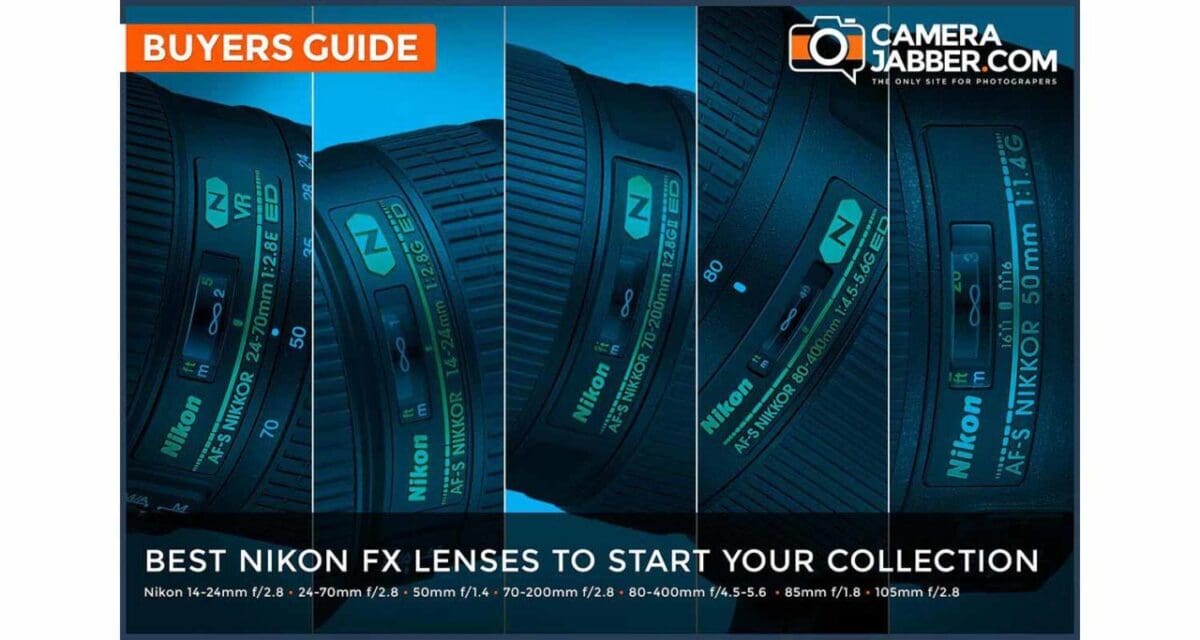Get the best out of your Nikon full-frame body without spending over the odds on lenses. Here are our picks for the best Nikon FX lenses for all sorts of shooting requirements.
Nikon’s current range of full-frame SLRs includes feature-rich and top-performance models, but you’ll need good glass to get the best out of them. Naturally, Nikon puts as much time and effort into creating legendary lenses as it does into designing brilliant bodies, so there’s plenty to choose from.
If you want to buy the best of everything, you’ll need deep pockets or maybe even a win on the Lottery, so it’s sensible to be selective.
If there are certain genres of photography that you’re really keen on, it can pay to splash out, whereas you can set your sights a little lower in other areas and go for more ‘affordable’ options.
While presenting our collection of favourite Nikon lenses, we’ll be majoring on top-class options in all the major categories, while also recommending more budget-friendly buys.
And if we feel there no real need to fork out big money on the most lavish lenses, we’ll let you know. So let’s crack on and find the best Nikon lenses to include in your outfit.
Best Nikon FX lenses: 01 Nikon AF-S 14-24mm f/2.8G ED, £1,460
Type: Wide-angle zoom
It’s a big wide lens for a big wide world
Focal length: 14-24mm
Aperture range: f/2.8 to f/22
Autofocus motor: Ring-type ultrasonic
Minimum focus distance: 0.28m
Maximum magnification factor: 0.15x
Image stabilizer: No
Weather seals: Yes
Filter thread: N/A
Dimensions: 98x132mm | Weight: 1,000g
Most FX format ‘standard’ zoom lenses for full-frame cameras tend to give a wider maximum viewing angle than their DX counterparts on APS-C bodies. Even so, when you’re shooting architectural interiors, or in a cramped indoor space with your back literally against the wall, extra viewing width can be really useful. The same sometimes goes for shooting sprawling cityscapes and scenic splendour.
Something of a heavyweight, this wide-angle lens tips the scales at a full kilogram and packs a huge and bulbous front element. Three aspherical elements are included in the complex optical path, along with two ED (Extra-low Dispersion) elements.
The resulting image quality is very impressive and, unlike some ultra-wide-angle lenses, this one does superbly well to maintain spectacular sharpness, right into the corners of the frame.
As you’d expect, barrel distortion is noticeable at the short end of the zoom range, but largely dies away at mid to long zoom settings.
Best for
Architectural interiors, landscapes, cityscapes, and for exaggerating perspective for creative effect.
Budget option
Nikon AF-S 18-35mm f/3.5-4.5G ED, £550
Pro
Much more compact and lightweight than the 14-24mm lens, and it’s only about a third of the price.
Con
The maximum angle of view is much reduced and it’s not a constant-aperture design.
Also consider
Sigma 12-24mm f/4.5-5.6 II DG HSM, £530
Pro
This lens gives an astonishingly wide maximum viewing angle, beating that of any Nikon rectilinear lens.
Con
Not as sharp as the Nikon 14-24mm in the corners of the frame, and it’s not weather-sealed.
Tamron SP 15-30mm f/2.8 Di VC USD, £850
Pro
Very good image quality, constant f/2.8 aperture, optical stabilization and a weather-sealed construction.
Con
A little less resistant to ghosting and flare than the Nikon 14-24mm lens.
SEE MORE: Best Nikon DX lenses to start your collection
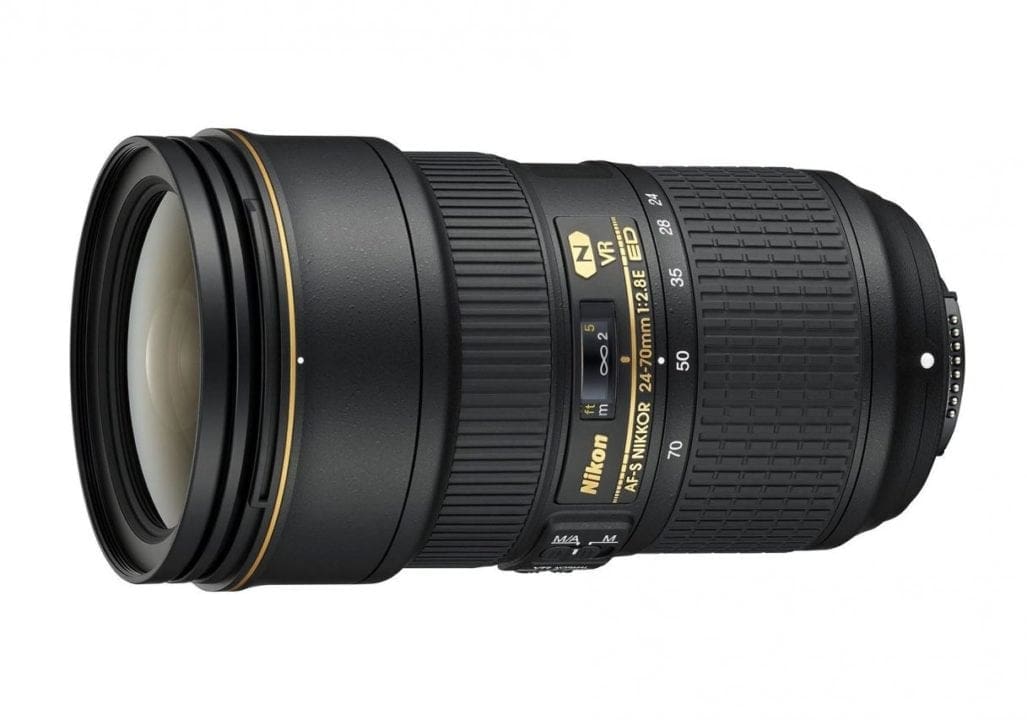
Best Nikon FX lenses: 02 Nikon AF-S 24-70mm f/2.8E ED VR, £1,850
Type: Standard zoom
This not-so-standard zoom is Nikon’s most versatile tool in the box
Focal length: 24-70mm
Aperture range: f/2.8 to f/22
Autofocus motor: Ring-type ultrasonic
Minimum focus distance: 0.38m
Maximum magnification factor: 0.28x
Image stabilizer: Yes
Weather seals: Yes
Filter thread: 82mm
Dimensions: 88x155mm | Weight: 1,070g
The perfect FX format lens for everyday shooting near and far, the 24-70mm stretches from a generously wide viewing angle to a portrait-friendly short telephoto length, complete with a constant f/2.8 aperture for maintaining fast shutter speeds or getting a fairly tight depth of field.
A major revamp of the older G-series lens, this new ‘E’ edition has an electromagnetically controlled diaphragm to enable greater exposure consistency in rapid bursts of continuous shooting.
Posh glass includes four aspherical elements, of which one is ED (Extra-low Dispersion), along with two further ED elements and an HRI (High Refractive Index) element.
Nano Crystal Coat is also applied to reduce ghosting and flare. A major upgrade over the older 24-70mm lens is that this one adds VR (Vibration Reduction), to aid consistent sharpness in handheld shooting.
Sharpness itself is simply excellent, even when shooting wide-open at f/2.8. Vignetting (darkened image corners) can be an issue at this aperture, throughout the entire zoom range, but most current and recent Nikon cameras offer automatic correction for this, either when shooting JPEGs or when processing raw files in Nikon software.
Best for
Landscapes, portraits, travel and general photography.
Budget option
Nikon AF-S 24-85mm f/3.5-4.5G ED VR, £375
Pro
Much more compact and lightweight than the hefty 24-70mm f/2.8 lens, and a fraction of the price to buy.
Con
There’s a ‘budget’ feel to the build quality, it’s not as sharp as the f/2.8 lens, and has a slower variable aperture range.
Also consider
Nikon AF-S 24-120mm f/4G ED VR, £730
Pro
Stretches much further into telephoto territory than a 24-70mm lens, constant f/4 aperture, optically stabilized.
Con
Not as sharp as Nikon’s 24-70mm f/2.8E lens, and distortions are marginally more noticeable.
Tamron SP 24-70mm f/2.8 Di VC USD, £680
Pro
Fast f/2.8 constant aperture, good build quality, refined handling, optical stabilization, affordable price.
Con
A little soft towards image corners compared with the Nikon lenses.
Stunning deals on Nikon-fit Sigma lenses
- Get the Sigma 70-300mm f4-5.6 DG Macro in Nikon fit at 48% off
- Get the Sigma 105mm F2.8 EX DG OS HSM Macro Lens in Nikon fit at 60% off
- Get the Sigma 10-20mm f3.5 EX DC HSM Lens fin Nikon fit at 50% off
- Get the Sigma 17-50mm f2.8 EX DC HSM Optical Stabilised lens in Nikon fit at 63% off
- Get the Sigma 150-600mm F/5-6.3 DG HSM Contemporary Zoom Lens in Nikon fit at 38% off
- Get the Sigma 18-250 mm f/3.5-6.3 DC Macro OS HSM Lens in Nikon fit at 45% off
- Get the Sigma 70-300mm f4-5.6 APO DG Macro in Nikon fit at 37% off
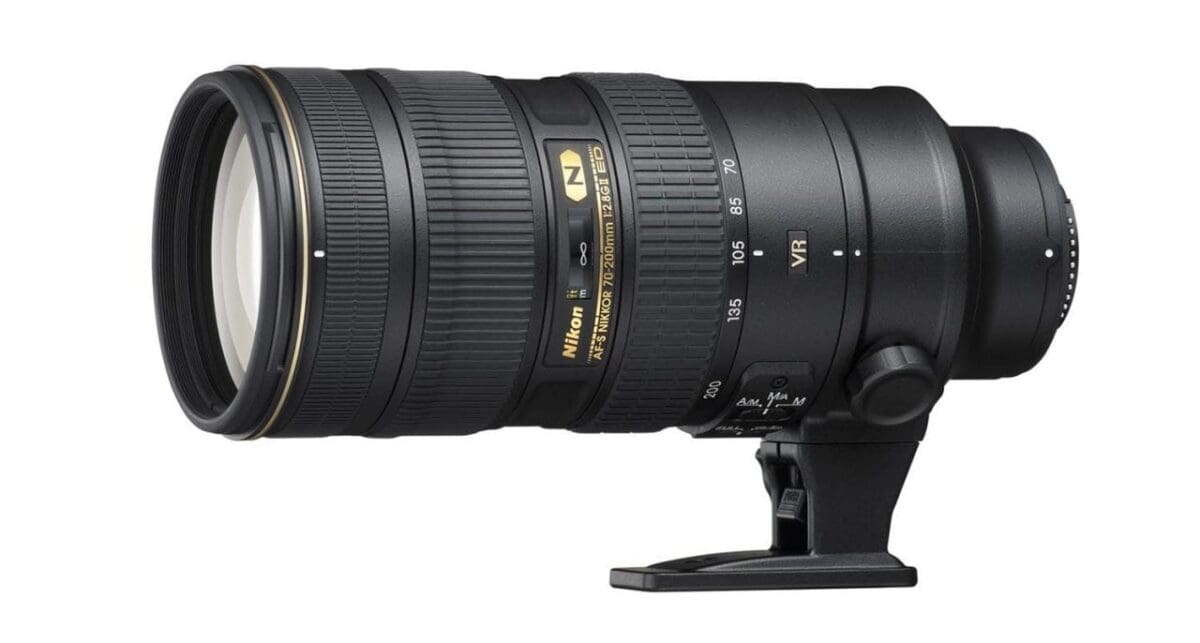
Best Nikon FX lenses: 03 Nikon AF-S 70-200mm f/2.8G ED VR II, £1,800
Type: Telephoto zoom
The reinvention of a classic, this is a cracking telephoto zoom
Focal length: 70-200mm
Aperture range: f/2.8 to f/22
Autofocus motor: Ring-type ultrasonic
Minimum focus distance: 1.4m
Maximum magnification factor: 0.12x
Image stabilizer: Yes
Weather seals: Yes
Filter thread: 77mm
Dimensions: 87x206mm | Weight: 1,540g
The Mk II edition of this lens was announced back in 2009, and represents a major overhaul of one of the world’s favourite optics. It’s strong and tough, with a weather-sealed magnesium alloy barrel that plays host to sophisticated ring-type ultrasonic autofocus and vibration reduction systems.
Autofocus is so fast that it practically snaps into position and makes the autofocus range limiter switch largely redundant. Autofocus is also deadly accurate and whisper-quiet, while VR is good for about 3.5 stops and comes complete with switchable normal and active modes.
Despite the pro-grade build quality and fancy electronics, it’s the glass that’s the real star of the show. There are no less than seven ED elements amongst the total of 21 elements arranged in 16 groups, along with a liberal application of Nano Crystal Coat to fend off ghosting and flare.
Sharpness, contrast and overall image quality matches or even exceeds that of some Nikon prime lenses. For example, at its 85mm zoom setting, this lens is even sharper than the AF-S 85mm f/1.4G and f/1.8G lenses at most aperture settings.
Best for
Action sports, wildlife, event photography and weddings.
Budget option
Nikon AF-S 70-200mm f/4G ED VR, £1,040
Pro
More compact and lightweight than the Nikon 70-200mm f/2.8, and its VR system is slightly more effective.
Con
A full f/stop slower than the f/2.8 lens, which affects the availability of fast shutter speeds and a really tight depth of field.
Also consider
Sigma 70-200mm f/2.8 EX DG OS HSM, £730
Pro
It has a fast and constant f/2.8 aperture and it’s stabilized, but is less than half the price of the competing Nikon.
Con
Construction is less rugged than that of the Nikon, it’s not as sharp and lacks weather-seals.
Tamron SP 70-200mm f/2.8 Di VC USD, £930
Pro
The usual ring-type ultrasonic autofocus and optical stabilization systems are included, while weather-seals are more of a surprise considering the price.
Con
Not quite as sharp or as strongly built as the equivalent Nikon lens, but it’s very good value for money.
SEE MORE: Best Canon EF-S lenses to start your collection

Best Nikon FX lenses: 04 Nikon AF-S 80-400mm f/4.5-5.6G ED VR, £1,860
Type: Super-telephoto zoom
Close the distance with this powerful super-telephoto lens
Focal length: 80-400mm
Aperture range: f/4.5-5.6 to f/32-40
Autofocus motor: Ring-type ultrasonic
Minimum focus distance: 1.75m
Maximum magnification factor: 0.2x
Image stabilizer: Yes
Weather seals: Sealed mount
Filter thread: 77mm
Dimensions: 96x203mm | Weight: 1,480g
A frustration of upgrading to a full-frame camera from an APS-C format body is that you lose the 1.5x crop factor that extends your effective telephoto reach. There’s a double whammy if you also ‘upgrade’ from a 70-300mm budget telephoto zoom to a fast, constant-aperture 70-200mm lens.
One solution is to use a 2x tele-converter with your 70-200mm zoom but this can degrade sharpness and autofocus speed. The revamped and revitalised version of Nikon’s old 80-400mm is a more elegant way to extend your telephoto reach.
Whereas the original 80-400mm VR had a painfully slow, camera-driven autofocus system, the ring-type ultrasonic upgrade in this lens is super-fast. Autofocus has also become a dual-mode affair, with a switch to give priority to either automatic or manual focusing.
And whereas the old lens was actually Nikon’s first to feature VR, the new model has a late-generation stabilizer that boosts effectiveness from two to four stops, as well as adding a supplemental ‘active’ mode.
Nano Crystal Coat is also applied to reduce ghosting and flare, while four ED elements and a Super ED element help to boost sharpness and contrast, while reducing colour fringing.
Best for
Long-range sports and wildlife photography, and for shooting aerial subjects like birds and aircraft.
Budget option
Nikon AF-S 200-500mm f/5.6E ED VR, £1,180
Pro
Greater telephoto reach than the 80-400mm lens, and VR performance is even more effective.
Con
Autofocus isn’t quite as quick as in the 80-400mm, and it’s relatively heavy at 2.3kg.
Also consider
Sigma 150-600mm f/5-6.3 DG OS HSM | S, £1,200
Pro
Tough, weather-sealed construction, very good performance and image quality, beats both Nikon lenses for telephoto reach.
Con
At 2.8kg, it’s nearly twice as heavy as the Nikon 80-400mm, but Sigma’s 150-600mm C (Contemporary) lens is more manageable and cheaper to buy.
Tamron SP 150-600mm f/5-6.3 Di VC USD, £740
Pro
Matches the Sigma 150-600mm Sports and Contemporary lenses for zoom range.
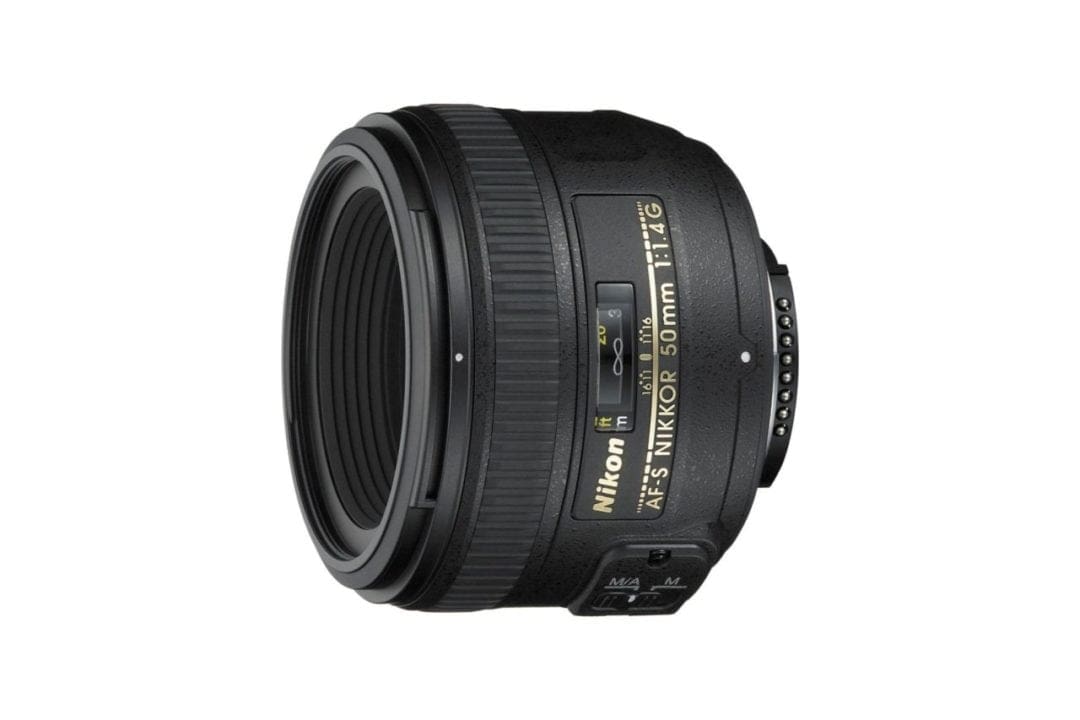
Con
Not as strongly built as the Canon 100-400mm or Sigma S (Sport) lens, but that’s reflected in the price.
Best Nikon FX lenses: 05 Nikon AF-S 50mm f/1.4G, £350
Type: Standard prime
It proves that you don’t need to spend silly money to get a sharp prime
Focal length: 75mm
Aperture range: f/1.4 to f/16
Autofocus motor: Ring-type ultrasonic
Minimum focus distance: 0.45m
Maximum magnification factor: 0.15x
Image stabilizer: No
Weather seals: Sealed mount
Filter thread: 58mm
Dimensions: 74x54mm | Weight: 280g
Nikon’s top-dollar ‘standard’ prime lens is the relatively new AF-S 58mm f/1.4G, but it’s no faster than this 50mm lens in terms of its widest available aperture, and it costs around four times as much to buy.
In theory, that makes the 50mm f/1.4G something of a bargain, and that’s certainly borne out in practice, when using the lens.
The nine-blade diaphragm helps to maintain a well-rounded aperture and to retain a silky-smooth bokeh, even when stopping down a little.
Unlike many examples of this class of lens, sharpness and contrast are very good indeed, even when shooting wide-open at f/1.4. By the time you hit f/2.8, image quality becomes razor-sharp and it stays like that all the way through to f/16.
Easy to live with, the lens is small and lightweight considering its fast f/1.4 aperture rating. The ring-type autofocus system isn’t massively quick but it’s highly accurate, which is important considering the tight depth of field that this lens can deliver.
Further positive image quality attributes include minimal colour fringing and negligible distortion.
Best for
General shooting when you want a natural perspective with a tight depth of field, or fast shutter speeds under low lighting conditions.
Also consider
Sigma 50mm f/1.4 DG HSM | A, £580
Pro
Pro-grade construction, superlative image quality with excellent sharpness and delightful bokeh.
Con
Much bigger and heavier than the Nikon 50mm f/1.4 lens, and considerably pricier.
Tamron SP 45mm f/1.8 SP Di VC USD, £500
Pro
It adds image stabilization and weather-seals, which are lacking on both of the Nikon and Sigma 50mm lenses.
Con
The widest available aperture of f/1.8 is two-thirds of an f/stop slower than in the Nikon and Sigma.
SEE MORE: Nikon D500 review
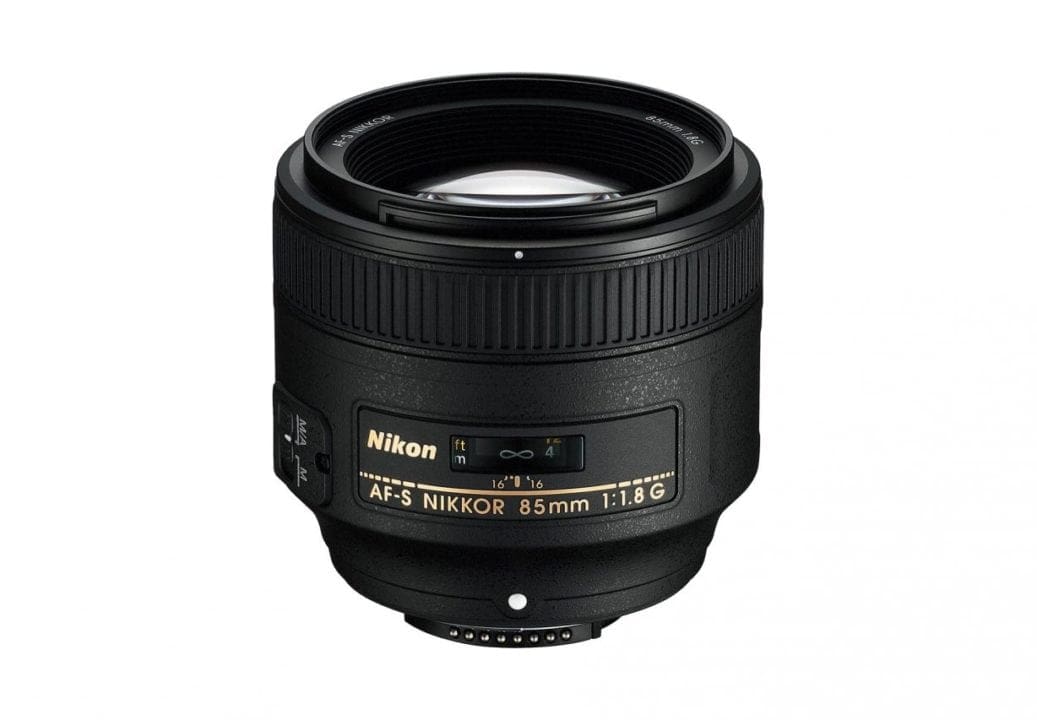
Best Nikon FX lenses: 06 Nikon AF-S 85mm f/1.8G, £400
Type: Portrait prime
The smart buy for a prime lens that can capture picture-perfect portraits
Focal length: 85mm
Aperture range: f/1.8 to f/16
Autofocus motor: Ring-type ultrasonic
Minimum focus distance: 0.8m
Maximum magnification factor: 0.12x
Image stabilizer: No
Weather seals: Sealed mount
Filter thread: 67mm
Dimensions: 80x73mm | Weight: 350g
Spend three times the cash and you can buy Nikon’s 85mm f/1.4G lens, which delivers such a tight depth of field that most of your portrait subject’s face will probably be out of focus. Relax things a little to f/1.8, and this lens looks a real bargain at the price.
It’s well made with the usual rubber sealing ring around the metal mounting plate and a focus distance scale neatly positioned under a protective viewing window. Other attractions include a ring-type ultrasonic autofocus system that’s rather more rapid than in the 50mm f/1.4G lens also featured.
Image quality is sumptuous, with levels of sharpness and contrast that match the much pricier 85mm f/1.4G lens stride for stride, throughout the albeit slightly reduced aperture range.
Colour fringing and distortion are essentially non-issues, and resistance against ghosting and flare is good, despite the lack of Nikon’s latest Nano Crystal Coat.
Bokeh is simply beautiful and, despite only having seven diaphragm blades, the aperture remains well-rounded when stopping down a little.
Best for
Portraiture and other short telephoto photography where fast shutter speeds or a tight depth of field are required.
Also consider
Sigma 85mm f/1.4 EX DG HSM, £620
Pro
This lens is two-thirds of an f/stop faster than the Nikon 85mm f/1.4 lens, and it’s strongly built.
Con
A weightier proposition than the Nikon f/1.8 lens and it’s rather more expensive, as well as lacking a weather-sealed mount.
Tamron SP 85mm f/1.8 Di VC USD, £750
Pro
Excellent image quality backed up by a strong, weather-sealed build, and it includes optical stabilization.
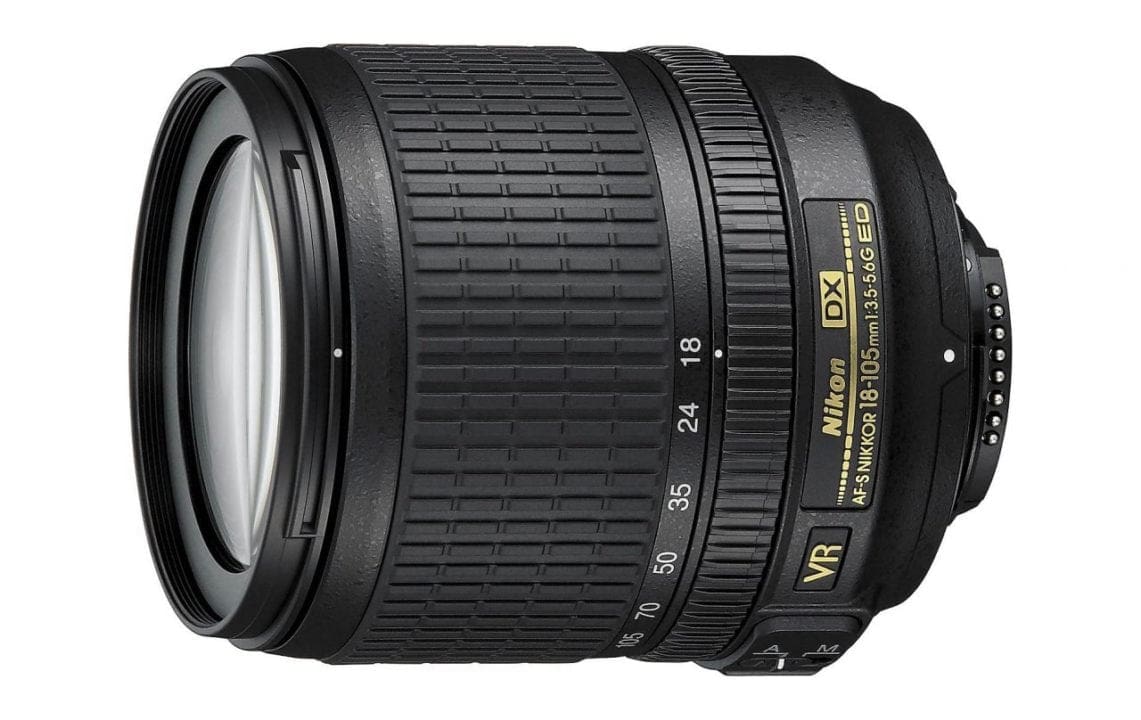
Con
Comparatively expensive for an 85mm f/1.8 lens, at nearly twice the price of the Nikon.
Best Nikon FX lenses: 07 Nikon AF-S 105mm f/2.8G VR IF ED Micro, £670
Type: Macro prime
If the devil really is in the detail, this lens will soon expose him
Focal length: 105mm
Aperture range: f/2.8 to f/32
Autofocus motor: Ring-type ultrasonic
Minimum focus distance: 0.31m
Maximum magnification factor: 1.0x
Image stabilizer: Yes
Weather seals: Sealed mount
Filter thread: 62mm
Dimensions: 83x116mm | Weight: 750g
Nikon’s ‘micro’ lenses (or ‘macro’ as most people call them) have been revealing extraordinary levels of fine detail over the last few decades. This one is a particularly high-tech example, with a fast and highly accurate ring-type ultrasonic autofocus system, late-generation VR II optical stabilization, ED glass and Nano Crystal Coat.
As with other full macro lenses, it delivers a 1.0x or 1:1 maximum reproduction ratio at its closest focus distance, which in this case is 31cm. This enables a comfortable working distance between the front edge of the lens and the subject being photographed, especially as the fully internal focus mechanism avoids the front of the lens extending at closer focus distances.
The lens is equally adept as a fairly fast, short telephoto optic for general shooting, where the optical stabilizer gives a benefit equal to around three f/stops. Its effectiveness is very much reduced for extreme close-up photography where there’s no real substitute for a tripod.
Sharpness is excellent throughout the aperture range, with minimal softening due to diffraction at very narrow aperture settings. This is a bonus when using narrow apertures in macro shooting, to enable anything more than a sliver of depth of field.
Best for
Revealing the smaller things in life, in all their glory.
Also consider
Sigma 105mm f/2.8 Macro EX DG OS HSM, £330
Pro
A high-performance macro lens with excellent handling and stabilization, at a bargain price.
Con
The optical stabilizer is a traditional type rather than offering the Tamron’s hybrid advantage.
Tamron SP 90mm f/2.8 Di Macro VC USD, £580
Pro
New and improved, the latest edition of this lens boasts great build and image qualities, plus hybrid stabilization that counteracts axial shift as well as regular vibration.
Con
It’s not far short of the price of the equivalent Nikon own-brand lens. Even so, it’s good value at the price.
READ MORE
What lens is best for your camera? Here’s how to choose…
Amir lens review for iPhone
